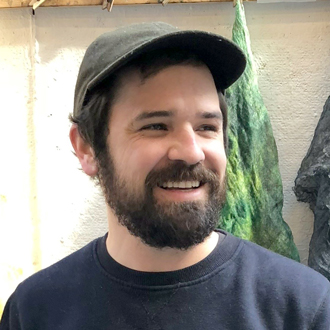
Mark Alister Raymer
2009, B.F.A., Studio Art: Printmaking, UNT CVAD
M.F.A., Printmaking, University of Kansas, Lawrence, Kansas
Instagram: @MarkAlisterRraymer
Website: Mark Raymer
Please tell us a bit about yourself.
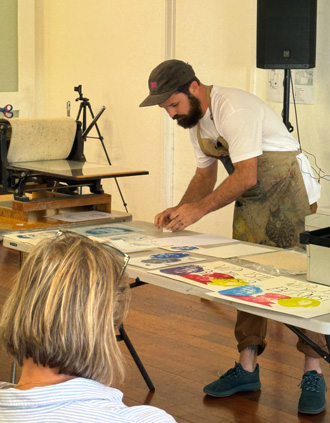 I was born in Christchurch, New Zealand, but raised in Texas. I knew art was for me at an early age, so I took my Ninja Turtles to school to do still-life drawings of them. It sparked a drive to capture the world as I saw it. After receiving my B.F.A. in printmaking from UNT, I lived abroad in New Zealand for six months, and it was there that I realized there was so much more for me to learn about being an artist. I moved back to the States and eventually to Lawrence, Kansas, where I received my M.F.A. in printmaking from the University of Kansas.
I was born in Christchurch, New Zealand, but raised in Texas. I knew art was for me at an early age, so I took my Ninja Turtles to school to do still-life drawings of them. It sparked a drive to capture the world as I saw it. After receiving my B.F.A. in printmaking from UNT, I lived abroad in New Zealand for six months, and it was there that I realized there was so much more for me to learn about being an artist. I moved back to the States and eventually to Lawrence, Kansas, where I received my M.F.A. in printmaking from the University of Kansas.
In 2016, I joined as the bass player for the acclaimed printmaking band A la Poupee and the Chine Colles. I remained in academia, teaching printmaking, drawing, and studio courses at various Kansas City, Missouri, art institutions. In 2020, my wife Michael Ann, 2011, UNT B.F.A., Studio Art: Photography, and I relocated to New Zealand to live and raise our children.
Has there been a defining moment in your professional career or a particular moment in your career that meaningfully altered your trajectory?
Three instances of a defining moment: 1st instance happened at UNT. I was floundering in the Communication Design program, and as I was taking an intermediate drawing class with [Professor] Lari Gibbons, she recommended I try printmaking. That simple suggestion significantly altered my course and allowed me to fall back in love with the process of making art. From there, Lari Gibbons, [Associate Professor] Andrew DeCaen, and Brian Spolans (2006, M.F.A. & 2002, B.F.A. Printmaking) nurtured, inspired, and pushed my creativity and individual voice.
The second instance was the decision to go to graduate school. I learned how to think and act like an artist at the University of Kansas, where I also learned how to self-motivate and propel myself toward artistic growth.
The third instance was leaving America. That drastic change altered my perspective and fundamentally improved my studio practice. Moving to New Zealand, my place of birth, allowed me to find a sturdier artistic voice.
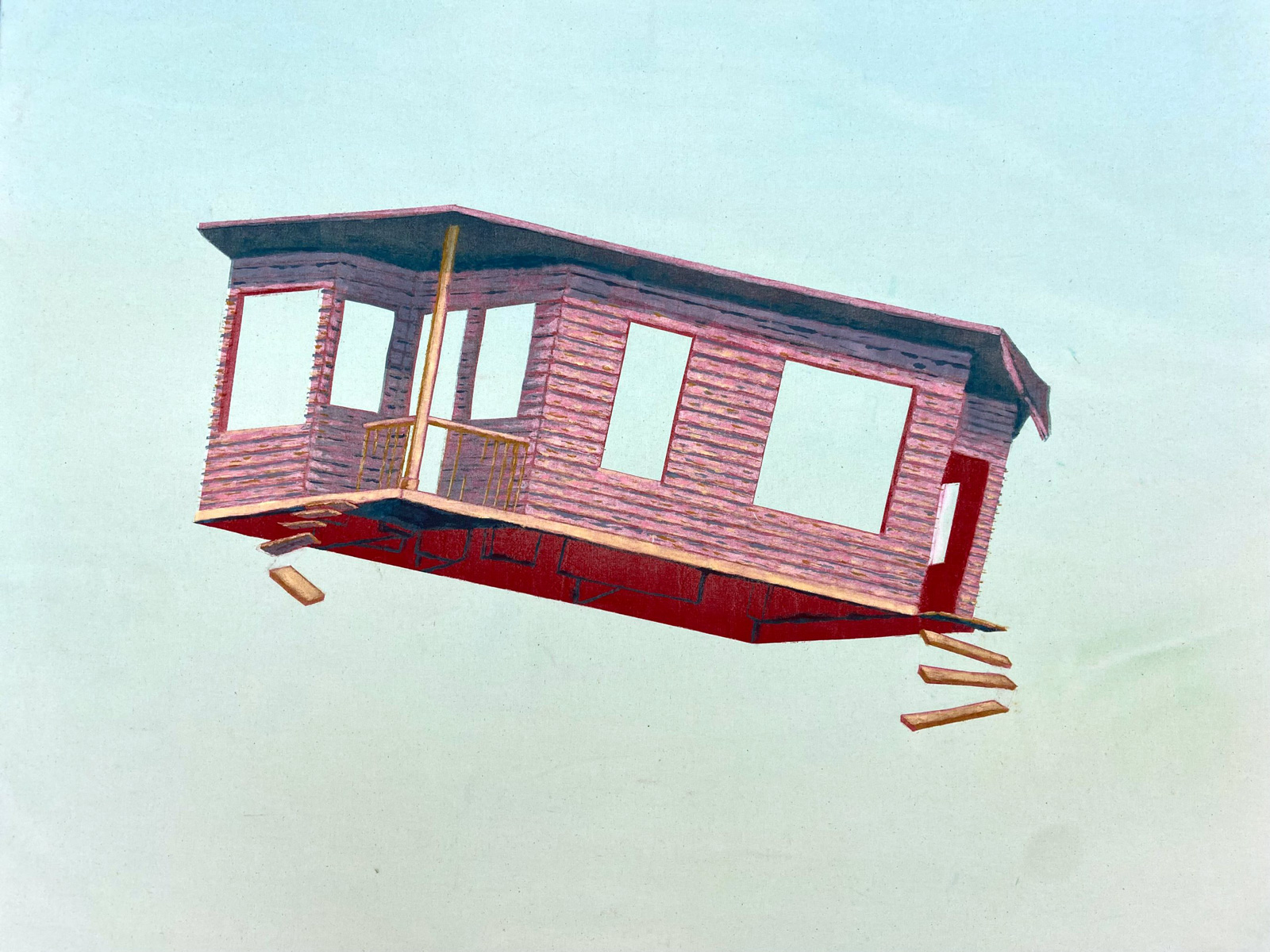 Mark Alister Raymer, "Me, We, Three," 2023, Monotype and dye on cotton, 33.5 x 41 inches. Image courtesy of the artist.
Mark Alister Raymer, "Me, We, Three," 2023, Monotype and dye on cotton, 33.5 x 41 inches. Image courtesy of the artist.
Raymer says his current work is informed by the confusion of navigating one’s sense of place. “Depending on where you are in the world, obtaining and holding onto a home can be difficult for many reasons, and if lost or never gained, it can invoke a sense of displacement, a loss of sure footing. I relate to the desire for home in the literal and figurative sense. I struggle with a sense of self and country being a New Zealander raised abroad in Texas, there is a disconnect I didn't fully recognise until I moved back here. There is a constant pull to mend the disconnect between a sense of self and place while also considering Aotearoa’s history. Until then, the house floats, unfilled, waiting for a solid foundation."
Was there ever a moment in a critique or class that made you think you should give up your art dreams, and if so, how did you get past that? Did that provide a lesson for your career?
Ha-ha, plenty. In a beginning painting class at UNT, during critique, the professor took a poll in class between me and another student about whose painting was more successful. Mine lost unanimously. This experience has informed how I teach today and is something I will never do to my students.
In the Communication Design program at UNT, I did not thrive. It was in no way the fault of the program or the professors (they were fantastic!). Creatively, it wasn't a good fit, filling me with self-doubt about my abilities and future. But in hindsight, I needed to reach that low level to fully appreciate when I found my place in the Printmaking program. I found not only my desired medium but also my artistic community. And that has brought me to where I am today.
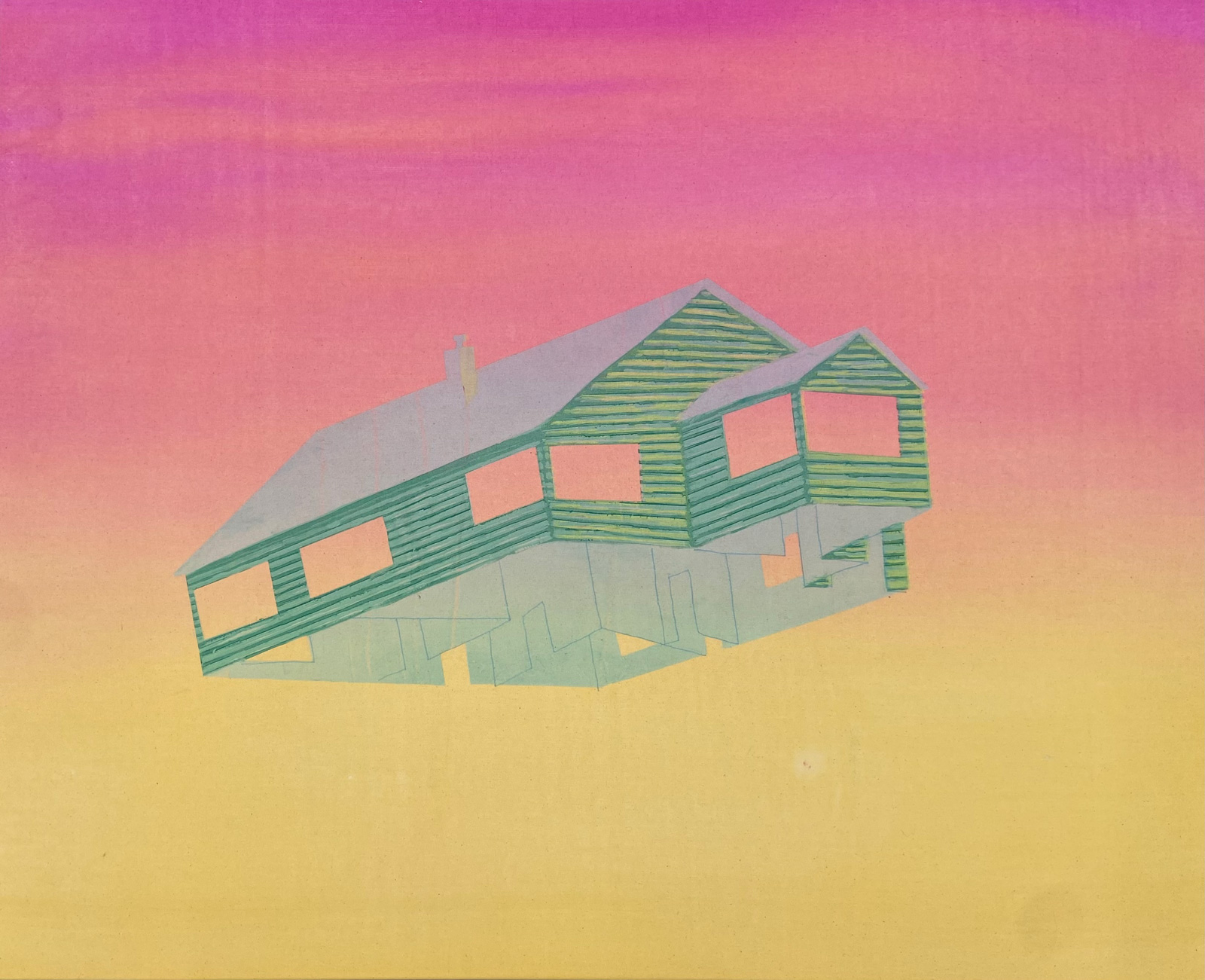
Mark Alister Raymer, "As Is," 2024, Monotype and dye on cotton, 41 x 33.5 inches. Image courtesy of the artist.
Can you share the story of when you've had to pivot in your creative journey?
It is essential to speak about how different the creative journey looks for all artists. Some rush, while others are more of a slow burn. What is important for all types of creatives is to recognize the need to pivot and what can trigger it. Inspiration ebbs and flows for us all. When artistic practice becomes stagnant, a change usually needs to occur to find the spark again. Changing mediums, cities, countries, identities, families, apartments, or clothes can allow for growth within the self and, in turn, creative growth. Above all is the want for change, the ability to recognize a need for growth, and the gumption for action to cause a pivot in the creative journey.
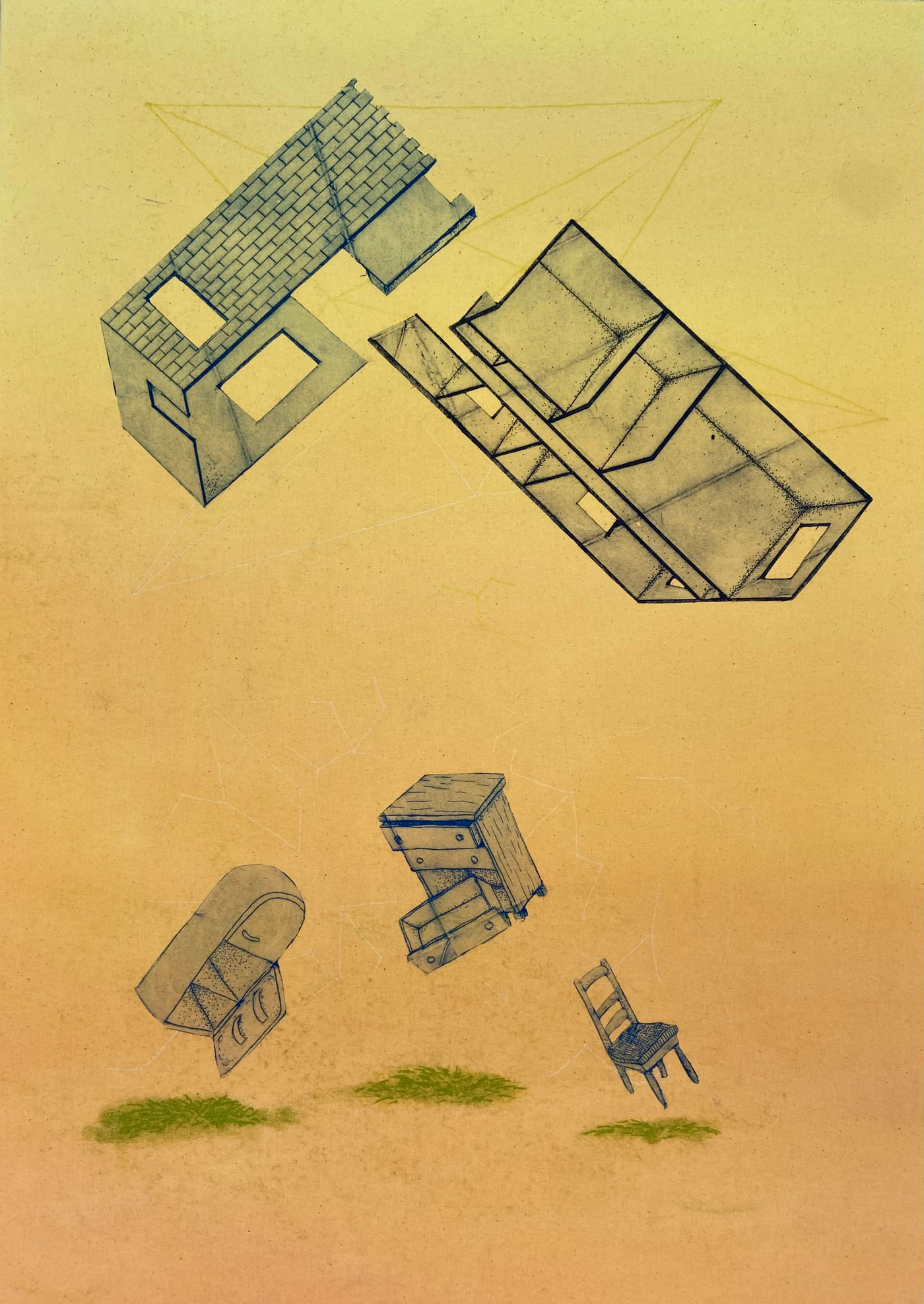
Mark Alister Raymer, "Things Left, Things Gone," 2024, Intaglio, monotype and dye on cotton, 20 x 27.5 inches. Image courtesy of the artist.
